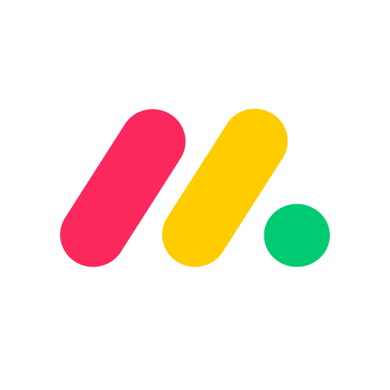Asana has long been a go-to platform for managing tasks, tracking projects, and collaborating with teams. But as business needs evolve and workflows diversify, many teams are exploring alternatives that better align with their unique project management requirements. Whether you’re looking for more customization, simpler interfaces, or better integrations, there are several powerful Asana alternatives available in 2025.
Here are 8 of the best Asana alternatives that can help you stay productive and organized.
1. Trello
Best for: Visual task management and Kanban boards
Trello remains a favorite for users who prefer a drag-and-drop visual approach to task management. Based on the Kanban method, Trello uses boards, lists, and cards to organize workflows. It is simple, intuitive, and ideal for individuals or small teams looking for an easy-to-use platform.
Key Features:
- Customizable workflows
- Power-Ups (integrations) with tools like Slack and Google Drive
- Automation via Butler
Pros:
- Easy learning curve
- Excellent for visual thinkers
Cons:
- Limited functionality for complex project needs
2. Wrike
Best for: Enterprise-level project management and team collaboration
Wrike offers a robust set of features ideal for mid-to-large teams. It supports Gantt charts, time tracking, workload management, and detailed analytics. Wrike’s dynamic request forms and custom workflows are perfect for businesses managing multiple departments and projects simultaneously.
Key Features:
- Real-time activity stream
- Built-in time tracking
- Advanced reporting dashboards
Pros:
- Highly scalable
- Strong collaboration tools
Cons:
- Slightly steeper learning curve
3. Monday.com
Best for: Custom workflows and visual project planning
Monday.com combines project management with work operating systems (Work OS) to create a flexible and colorful environment for task tracking. It supports a variety of project views—Kanban, Gantt, calendar, and timeline—and is easily adaptable to different industries.
Key Features:
- Pre-built templates for various teams
- Automation recipes
- Strong integrations with tools like Slack, Dropbox, and Microsoft Teams
Pros:
- Highly visual and customizable
- User-friendly interface
Cons:
- Can get expensive for larger teams
4. ProofHub
Best for: All-in-one project management and team communication
ProofHub consolidates tasks, discussions, notes, time tracking, and file sharing into a single interface. Its built-in chat and proofing tools make it ideal for creative teams and agencies who want to reduce the need for multiple tools.
Key Features:
- Custom roles and permissions
- Built-in chat and discussion threads
- Gantt charts and task dependencies
Pros:
- No per-user pricing
- Strong collaboration features
Cons:
- Limited integrations compared to others
5. Jira
Best for: Agile development teams and issue tracking
Developed by Atlassian, Jira is a robust tool for software teams managing agile projects. It supports Scrum and Kanban boards, sprints, and backlog prioritization. Jira’s strength lies in its flexibility and powerful developer-friendly features.
Key Features:
- Scrum & Kanban boards
- Roadmaps and release tracking
- Integration with Bitbucket, Confluence
Pros:
- Perfect for engineering teams
- Detailed task tracking
Cons:
- Not ideal for non-technical teams
6. Basecamp
Best for: Simplicity and team collaboration
Basecamp provides a clean, distraction-free interface for team collaboration. It combines to-do lists, message boards, scheduling, file storage, and real-time group chat into one platform. It’s especially useful for small businesses and freelancers.
Key Features:
- Automatic check-ins
- Team message boards
- Hill charts for project progress
Pros:
- Minimalist design
- Flat pricing regardless of team size
Cons:
- Limited task customization options
7. nTask
Best for: Startups and small businesses
nTask is an affordable, user-friendly platform that covers task management, project planning, meeting scheduling, risk assessment, and time tracking. It’s an excellent alternative for teams looking for an all-in-one tool without the complexity.
Key Features:
- Meeting management module
- Risk and issue tracking
- Kanban boards and Gantt charts
Pros:
- Budget-friendly
- Simple UI
Cons:
- Fewer integrations than premium tools
8. Airtable
Best for: Custom databases and creative workflows
Airtable combines the simplicity of a spreadsheet with the power of a database. It’s great for teams that require flexible data structuring—like marketing, content creation, and product development. Airtable supports custom views, automations, and integrations with many tools.
Key Features:
- Grid, gallery, calendar, and Kanban views
- Customizable fields and linked records
- Automation and scripting support
Pros:
- Extremely flexible
- Beautiful, intuitive interface
Cons:
- Can be overwhelming for new users
Final Thoughts
Each of these Asana alternatives offers a unique approach to project and task management. Whether you’re a solo entrepreneur, a fast-growing startup, or an established enterprise, choosing the right tool depends on your workflow style, budget, and team size.
At Alternative Knot, our mission is to help you discover smarter ways to work. We explore tools, platforms, and technologies that elevate productivity and empower modern teams. No matter where you are in your productivity journey, we’re here to guide you toward the best solutions for your goals.
 Monday.com
Monday.com 